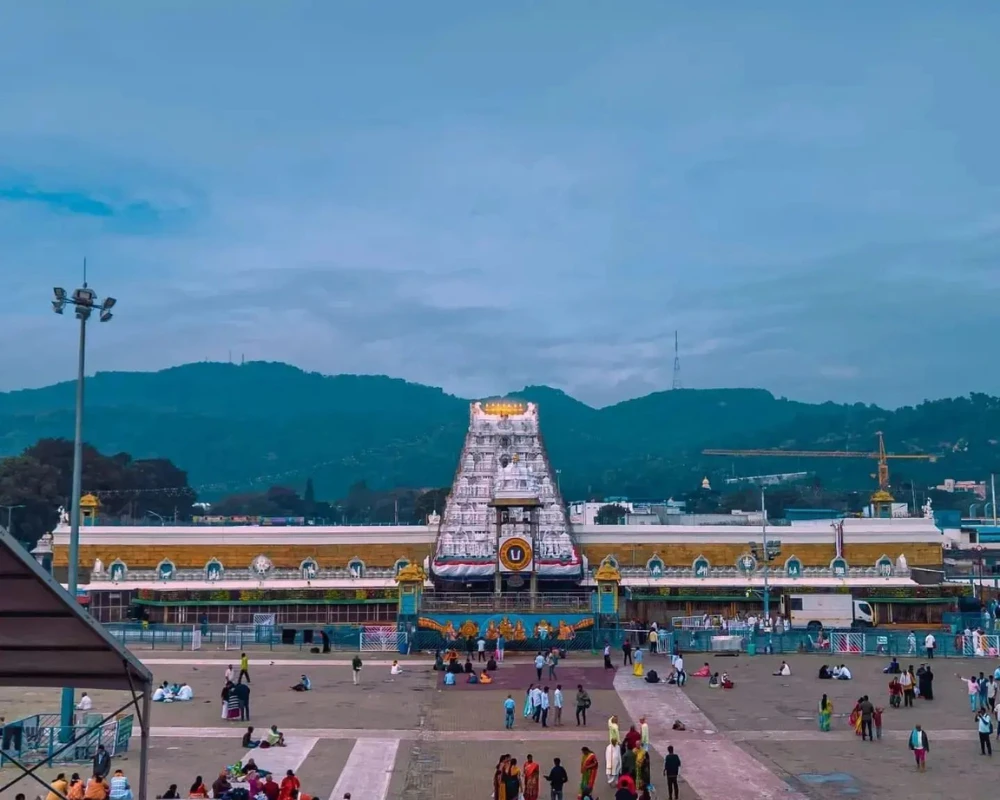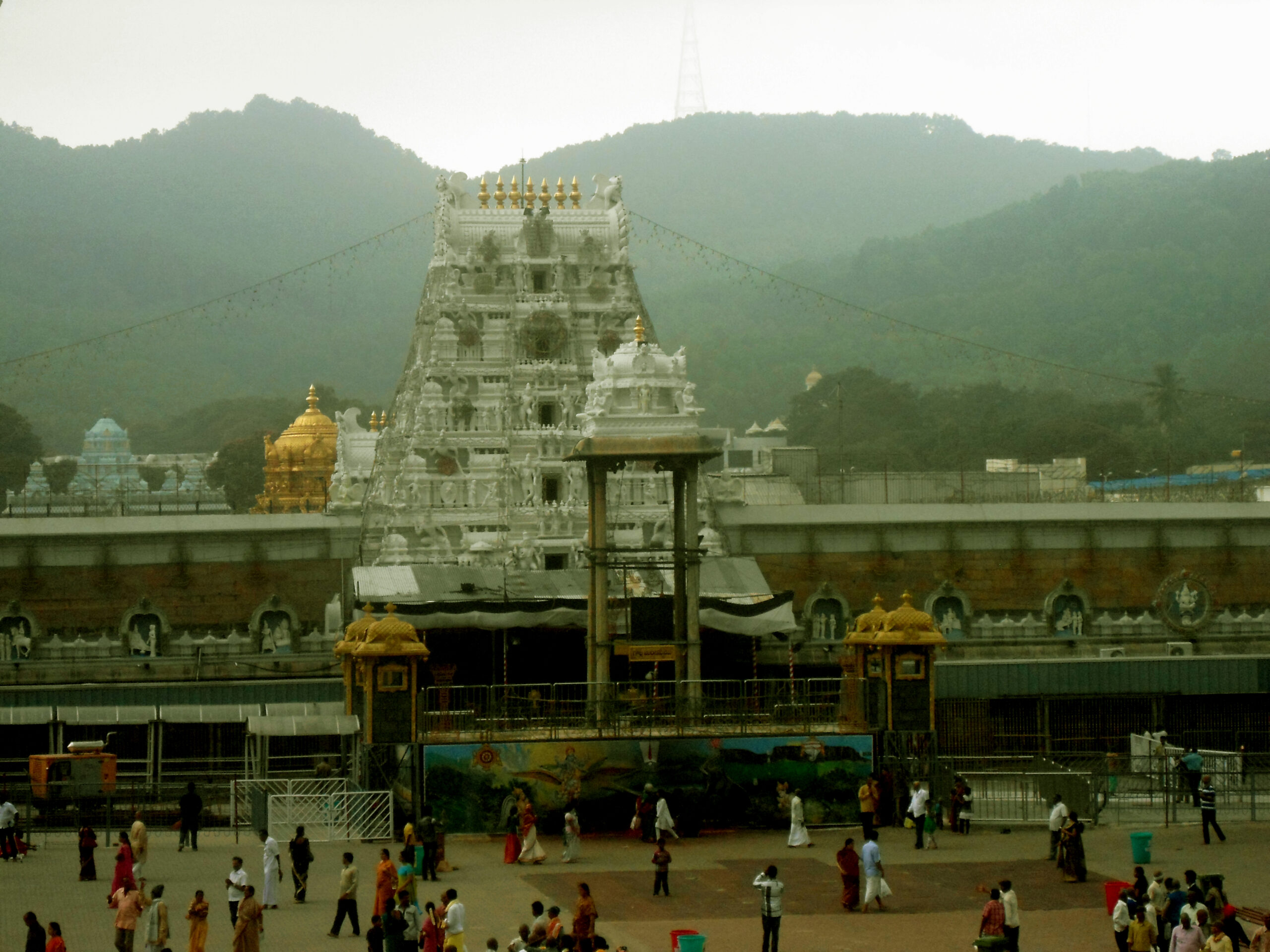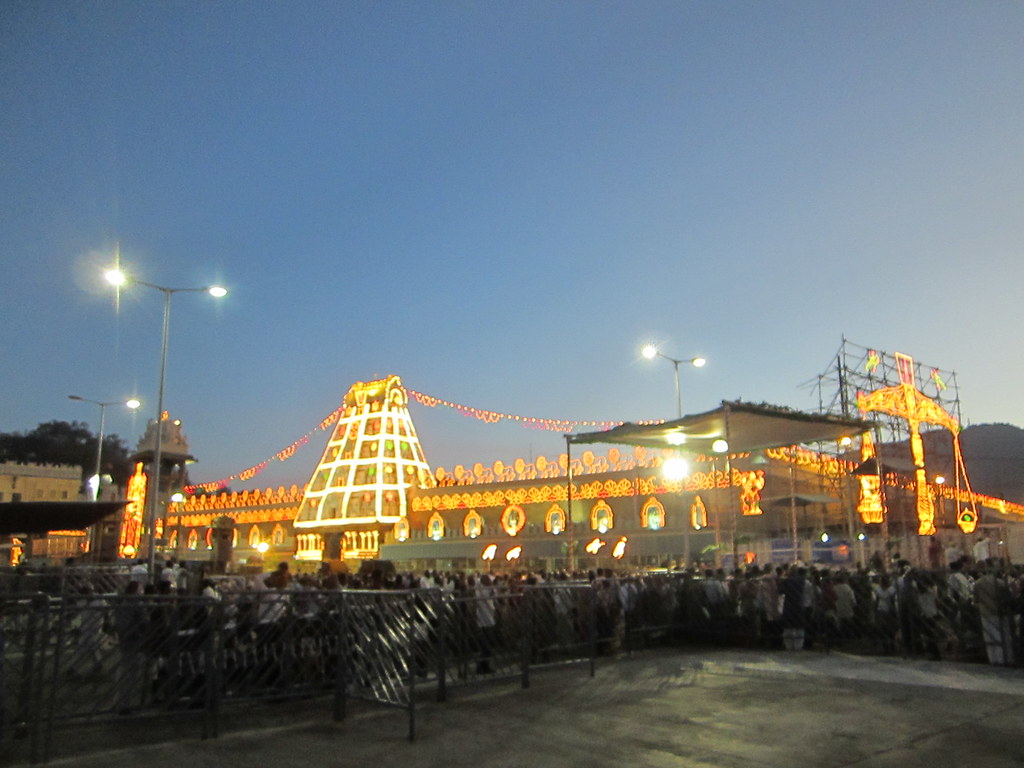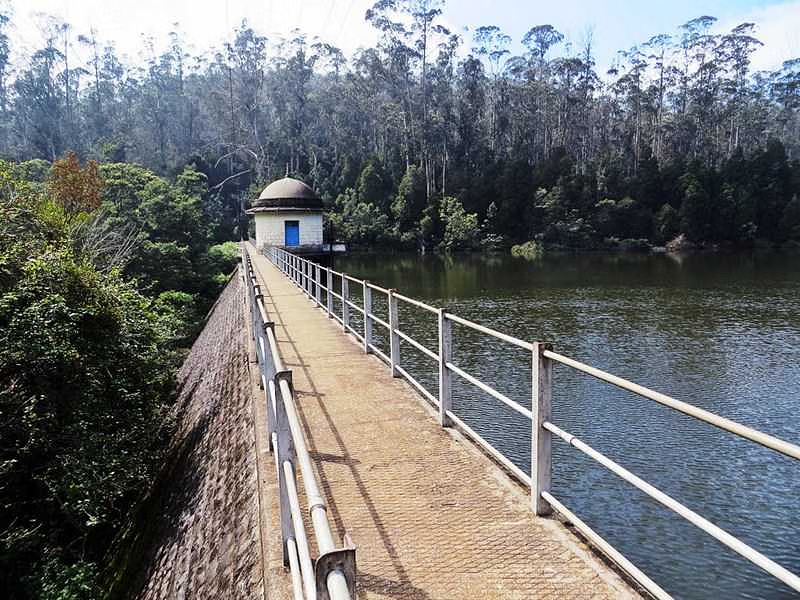The Sri Venkateswara Temple in Tirupati stands as one of India’s most visited pilgrimage sites, drawing tens of thousands of devotees daily. With such enormous crowds throughout the year, timing your visit becomes crucial for a meaningful darshan experience. Understanding the best time to visit Tirupati to avoid rush, along with essential information on dress code requirements and temple protocols, can transform your spiritual journey from a stressful ordeal into a peaceful divine encounter.
Planning your visit with the right timing can significantly enhance your spiritual experience. While weekends and festival seasons tend to attract larger crowds, weekdays and early mornings are generally less busy. Moreover, being aware of the dress code in Tirupati and other temple regulations can help avoid any last-minute hassles, ensuring your focus remains on the divine darshan of Lord Balaji.
Table of Contents
Tirupati Crowd Patterns: Understanding Peak and Off-Peak Times
The crowd flow at Tirupati follows certain predictable patterns based on days, months, festivals, and even times of day. Understanding these patterns is essential for determining the best time to visit Tirupati to avoid rush and can significantly improve your darshan experience.
Weekday vs. Weekend Crowd Analysis
| Day | Average Footfall | Waiting Time | Recommendation |
|---|---|---|---|
| Monday | Moderate (40,000-60,000) | 4-6 hours | Good weekday option |
| Tuesday | Low to Moderate (30,000-50,000) | 3-5 hours | Highly favorable |
| Wednesday | Low to Moderate (30,000-50,000) | 3-5 hours | Highly favorable |
| Thursday | Moderate (45,000-65,000) | 4-6 hours | Average weekday |
| Friday | High (60,000-80,000) | 6-8 hours | Avoid if possible |
| Saturday | Very High (80,000-100,000+) | 8-12+ hours | Extremely crowded |
| Sunday | Very High (80,000-100,000+) | 8-12+ hours | Extremely crowded |
Best weekdays to visit: Tuesday and Wednesday consistently see the lowest footfall, making them the optimal choice for those seeking the best day to visit Tirupati Balaji temple with minimal waiting time.
Monthly Crowd Variations

Certain months experience significantly higher or lower crowds due to festivals, school holidays, and weather conditions, directly impacting the best time to visit Tirupati to avoid rush.
Low-Season Months (Ideal for Avoiding Rush)
February (post-Sankranti): Moderate crowds with pleasant weather conditions perfect for comfortable darshan.
June (summer heat): Lower crowds due to extreme temperatures, though weather can be challenging for devotees.
Late August (post-holiday season): Moderate crowds with occasionally rainy conditions providing relief from heat.
September (non-festival period): Excellent time with manageable crowds and comfortable weather.
Peak-Season Months (Maximum Crowd)
April-May (summer holidays): Extremely heavy crowds due to school vacation periods.
November-December (festival season): Maximum rush during Vaikuntha Ekadasi and winter holidays.
January (Sankranti festival): Very high crowds during this major Telugu festival.
Time of Day Considerations
The temple operates 24 hours, but crowd density varies significantly throughout the day:
- 4:00 AM – 6:00 AM: Minimal crowds, coolest temperatures
- 6:00 AM – 11:00 AM: Gradually increasing crowds
- 11:00 AM – 4:00 PM: Peak daytime crowds with longest waits
- 4:00 PM – 8:00 PM: High evening crowds
- 8:00 PM – 12:00 AM: Moderate night crowds
- 12:00 AM – 4:00 AM: Lowest crowds, ideal for avoiding rush
Best Day to Visit Tirupati Balaji: Optimizing Your Pilgrimage

To experience the smoothest darshan with minimal crowds, the absolute best day to visit Tirupati Balaji combines optimal timing with strategic planning:
Optimal Visit Combination
Tuesday or Wednesday mornings between 4:00 AM and 6:00 AM during non-festival months like February, late August, or September.
This ideal combination can reduce darshan waiting time to just 2-3 hours, compared to the typical 6-12+ hours during peak days and times.
Alternative Options for Unavoidable Peak Times
If visiting during optimal periods isn’t possible, consider these strategies:
Special Entry Darshan (Sheeghra Darshan): Book tickets in advance through the official TTD website. Priced at ₹300 per person, these tickets significantly reduce wait times to around 2 hours regardless of the day or month.
VIP Darshan Options: For those seeking premium experiences, VIP darshan tickets are available at higher prices with minimal waiting periods.
Organized Tour Packages: Professional tour operators often have arrangements that can streamline the entire pilgrimage experience, including darshan bookings and logistics.
Dress Code in Tirupati: Essential Guidelines for Devotees

The Tirumala Tirupati Devasthanam (TTD) maintains strict dress code regulations for all visitors. Understanding and respecting these requirements is essential for a hassle-free darshan and demonstrates proper reverence for this sacred site.
Tirupati Dress Code for Male Devotees
Men entering the temple must adhere to traditional or formal attire following specific guidelines:
Permitted Attire for Men:
- Traditional wear: Dhoti and upper cloth/angavastram
- Regional traditional: Panche/veshti with shirt
- Formal options: Formal pants with shirt (preferably light colors)
- Indian formal: Kurta pajama sets
- Acceptable casual: Plain, well-fitted trousers with appropriate shirt
Prohibited for Men:
- T-shirts with logos, graphics, or text
- Shorts or bermudas of any length
- Sleeveless attire including tank tops
- Torn or ripped clothing of any kind
- Overly casual or beach wear
Is Jeans Allowed in Tirupati? Common Query Clarified
This remains one of the most frequent questions for first-time visitors. The answer varies by gender and specific temple policies:
For Men: Plain, well-fitted jeans without tears, rips, or excessive fading are generally acceptable, though traditional attire is strongly preferred and recommended.
For Women: Jeans are not permitted regardless of style or condition. Traditional Indian attire is mandatory for female devotees.
Important Note: While plain jeans may be technically allowed for men, wearing traditional attire shows greater respect and often results in a more comfortable temple experience.
Tirupati Traditional Dress Recommendations
For the most respectful and authentic temple experience, consider wearing tirupati traditional dress:
For Men:
- Preferred: White or light-colored veshti/dhoti with angavastram (shoulder cloth)
- Alternative: Light-colored kurta with matching or white pajama/lungi
- Accessories: Optional traditional tilaka or sandalwood paste
For Women:
- Primary choice: Traditional saree, preferably in light colors
- Alternative: Salwar kameez with dupatta
- Regional option: Half-sarees for younger girls
Many accommodation facilities near the temple provide traditional clothing rentals for pilgrims who arrive unprepared, ensuring everyone can meet the dress code requirements.
Tirupati Temple Dress Code for Ladies
Female devotees face stricter dress code requirements reflecting traditional temple protocols:
Permitted Attire for Women:
- Traditional sarees in any appropriate color
- Salwar kameez with dupatta properly worn
- Churidar with long kurta and dupatta
- Half-sarees for younger girls and teenagers
- Traditional Lehenga with appropriate blouse and dupatta
Strictly Prohibited for Women:
- Western attire of any kind (jeans, pants, skirts, shorts)
- Sleeveless tops or dresses
- Low-cut or revealing clothing
- Leggings or jeggings
- Short or tight-fitting clothing
- Transparent or semi-transparent fabrics
Additional Dress Code Considerations
Footwear: All devotees must remove footwear before entering the temple premises. Shoe storage facilities are available for a nominal fee.
Head covering: While not mandatory, many devotees prefer to cover their heads as a mark of respect.
Colors: Light colors are preferred, though this is not strictly enforced. Avoid overly bright or flashy colors.
Cleanliness: Ensure all clothing is clean and well-maintained, regardless of style.
Special Considerations for Peak Season Visits
When circumstances require visiting during busy periods, understanding crowd management can help minimize inconvenience:
Advance Preparations for Peak Times
Accommodation booking: Book lodging well in advance, as Tirumala has limited options that fill quickly during peak seasons.
Transportation planning: Arrange return transportation in advance, as availability becomes scarce during festivals.
Physical preparation: Prepare for long waits by bringing water, snacks, and comfortable seating options.
Documentation: Carry all necessary identity documents and booking confirmations.
What to Expect: Peak vs. Off-Peak Comparison
| Aspect | During Peak Times | During Off-Peak Times |
|---|---|---|
| Waiting Duration | 8-12+ hours | 2-5 hours |
| Queue Length | Several kilometers | Hundreds of meters |
| Darshan Time | 3-5 seconds | 10-15 seconds |
| Accommodation Availability | Very limited, premium pricing | More options, standard rates |
| Transportation Costs | 30-50% higher | Standard rates |
| Overall Experience | Rushed, crowded, physically taxing | More peaceful, less stressful |
Festivals and Events to Consider When Planning
When determining the best time to visit Tirupati to avoid rush, be aware of these high-traffic periods:
Major Festival Periods (Avoid for Minimal Crowds)
Brahmotsavam (September/October): Annual 9-day celebration with extremely high crowds and longest waiting times.
Vaikuntha Ekadasi (December/January): One of the busiest single days of the year with unprecedented crowds.
Makar Sankranti (January 14-15): Major Telugu festival resulting in very high attendance.
Sri Rama Navami (March/April): Significant religious celebration increasing crowd levels substantially.
Summer vacation period (mid-April to early June): Consistently high crowds due to school holidays across India.
Winter holidays (late December): Peak tourist season coinciding with pleasant weather and festivals.
Planning Your Complete Tirupati Experience
A successful Tirupati pilgrimage extends beyond just the darshan, encompassing accommodation, local attractions, and spiritual preparation. Understanding the complete journey helps devotees make the most of their sacred visit while maintaining focus on the divine experience.
Optimal Itinerary for Minimal Rush
Day 1: Arrive in Tirupati town by evening, check into accommodation, and prepare for early morning darshan.
Day 2: Wake up at 3:00 AM, reach temple by 4:00 AM for early morning darshan, complete visit by 8:00 AM.
Day 3: Explore local attractions or depart, depending on travel plans.
Additional Temple Visits and Local Attractions
While in the region, consider visiting nearby spiritual sites and attractions. The area offers numerous temples and natural beauty spots that complement the main Tirupati pilgrimage experience.
Extending Your South India Journey
After your peaceful Tirupati darshan, consider exploring more of South India’s cultural richness. You might want to experience the scenic hill stations with our Mahabaleshwar tour packages from Mumbai, enjoy a comprehensive temple experience with our Tirupati tour package from Mumbai, discover the backwaters and spices of God’s Own Country with Kerala tour package from Mumbai, or explore the incredible diversity of our nation through our India tour packages from Mumbai.
Final Thoughts: Maximizing Your Spiritual Experience
The best time to visit Tirupati to avoid rush ultimately combines strategic timing with proper preparation and respectful conduct. By choosing weekday mornings during non-festival months, adhering to the dress code in Tirupati, and planning your visit thoughtfully, you can transform what might otherwise be a crowded, stressful experience into a peaceful, meaningful spiritual journey.
Remember that while managing crowds is important for comfort, the primary purpose of visiting Tirupati remains connecting with the divine presence of Lord Venkateswara. Proper preparation, including understanding the best day to visit Tirupati Balaji, adherence to dress codes, and respect for temple traditions, ensures that your pilgrimage will be both spiritually fulfilling and logistically smooth.
Whether you’re seeking a quick darshan or planning an extended spiritual retreat, the key lies in respecting the sacred nature of this ancient pilgrimage site while making practical choices that enhance rather than detract from your devotional experience.
You can visit us at VDP Travels, Neighbourhood Complex, F- 5, near SBI Bank, Sector 4, Nerul, Navi Mumbai, Mumbai, Maharashtra 400706. For comprehensive Tirupati pilgrimage packages and seamless darshan arrangements, call +91 99675 18405, or visit https://vdp-travels.com.
Best Time to Visit Tirupati to Avoid Rush- FAQs
What is the best time to visit Tirupati to avoid rush during the year?
Tuesday and Wednesday mornings between 4-6 AM during February, late August, or September offer minimal crowds with 2-3 hours waiting time.
Is jeans allowed in Tirupati temple for male and female devotees?
Plain jeans may be acceptable for men though traditional attire is preferred, but jeans are strictly not allowed for women regardless of style.
What is the tirupati traditional dress recommended for devotees?
Men should wear dhoti with angavastram or kurta pajama, while women must wear sarees or salwar kameez with dupatta for temple entry.
Which is the best day to visit Tirupati Balaji temple?
Tuesday and Wednesday are consistently the best days with lowest footfall, offering 3-5 hours waiting time compared to 8-12+ hours on weekends.
What is the tirupati dress code for male visitors specifically?
Men must wear dhoti with upper cloth, formal pants with shirt, or kurta pajama sets, avoiding t-shirts, shorts, or sleeveless attire.
What are the tirupati temple dress code for ladies requirements?
Ladies must wear traditional sarees, salwar kameez with dupatta, or churidar, with western attire like jeans, pants, or sleeveless tops strictly prohibited.
What is the complete dress code in tirupati for all devotees?
All devotees must wear modest, traditional or formal attire covering shoulders and legs, with specific requirements varying by gender and stricter rules for women.
How long is the waiting time during peak vs off-peak periods?
Off-peak periods have 2-5 hours waiting time while peak times like weekends and festivals can extend to 8-12+ hours for darshan.
Are there any special entry options to reduce waiting time?
Yes, Special Entry Darshan (Sheeghra Darshan) tickets at ₹300 per person reduce waiting time to around 2 hours regardless of crowds.
What should I avoid when planning my Tirupati visit to minimize crowds?
Avoid weekends, major festivals like Brahmotsavam and Vaikuntha Ekadasi, school holiday periods, and late morning to evening hours for minimal rush.





